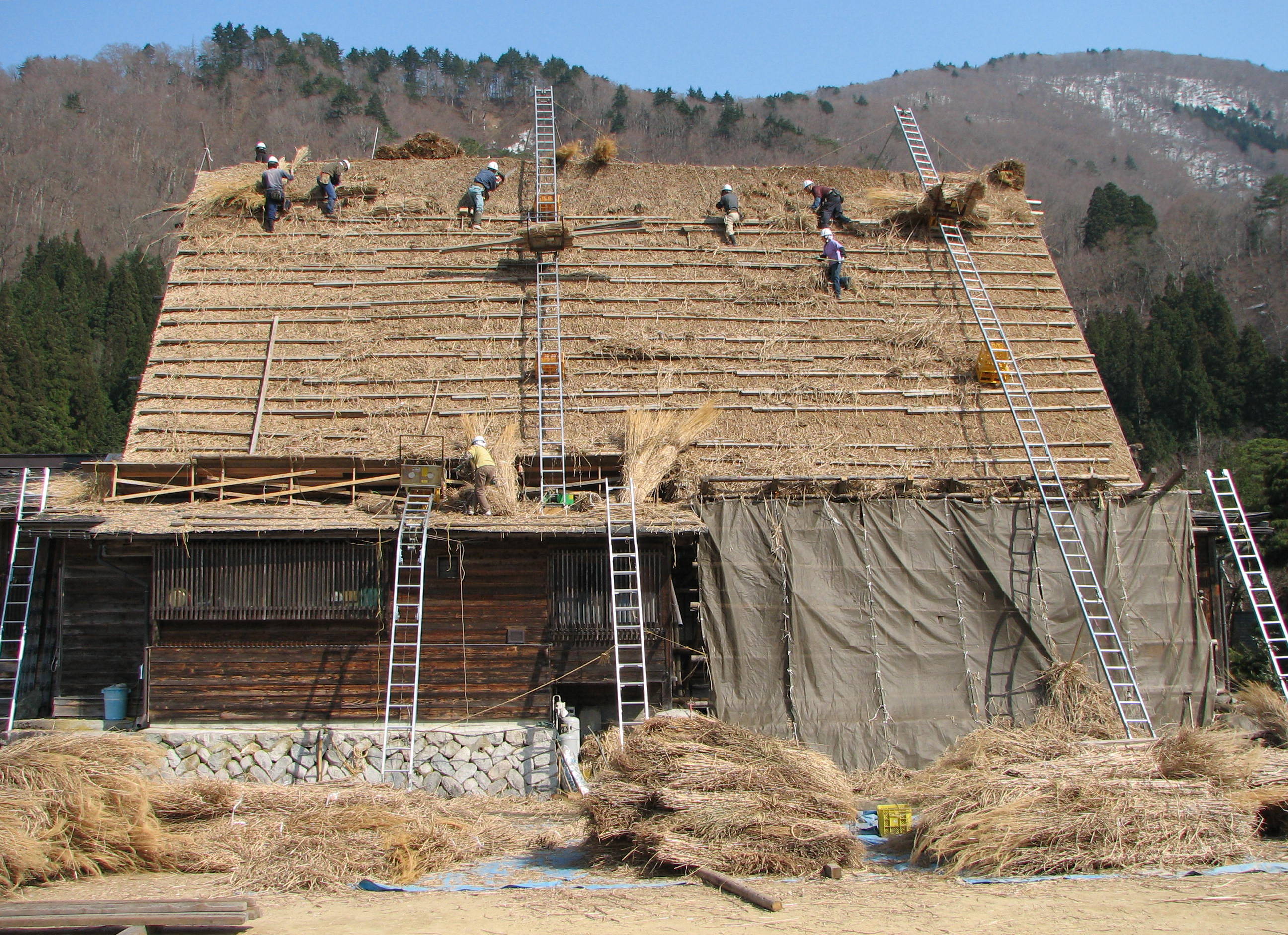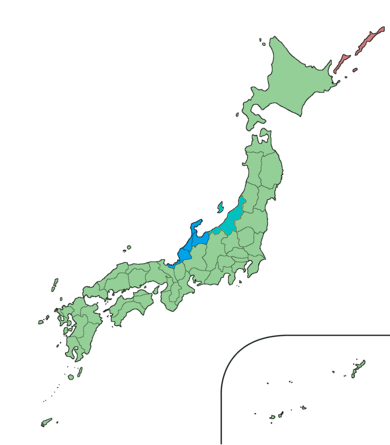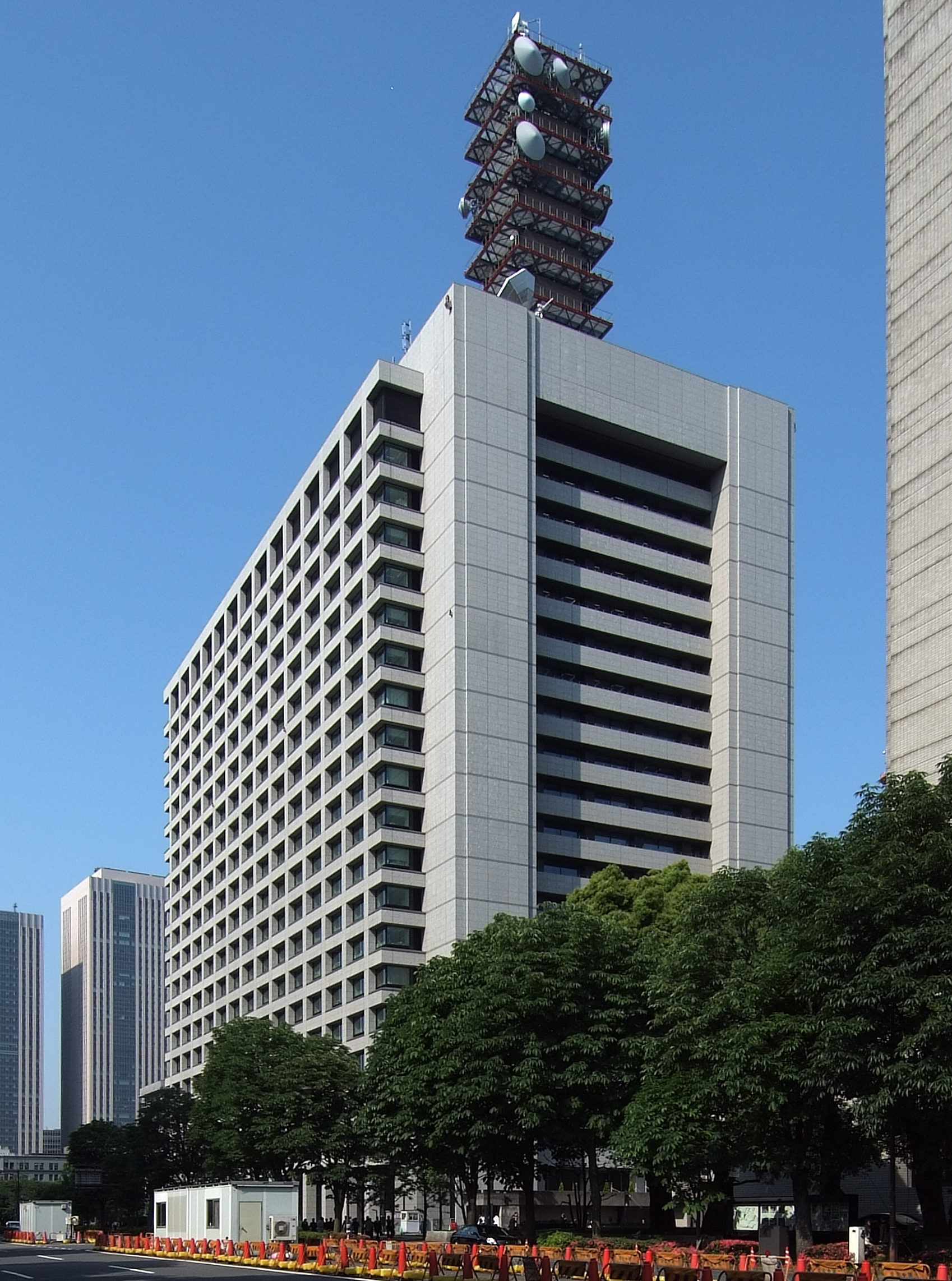|
Tōkai-Hokuriku Expressway
The is a national expressway in the Chūbu region on the island of Honshū in Japan. It is managed by Central Nippon Expressway Company. The route is signed E41 under the Ministry of Land, Infrastructure, Transport and Tourism's "2016 Proposal for Realization of Expressway Numbering." Overview Tōkai and Hokuriku are the names of the two regions of Japan that are linked by the expressway. The expressway begins at a junction with the Meishin Expressway to the northwest of the Nagoya urban area and follows a northerly course into Gifu Prefecture, passing the capital Gifu and heading further north into the mountainous Hida region. The expressway also passes by Shirakawa-gō and Gokayama, two UNESCO World Heritage Sites straddling the border between Gifu Prefecture and Toyama Prefecture. The expressway continues north through western Toyama Prefecture to its terminus at a junction with the Hokuriku Expressway and the Nōetsu Expressway. The first section of the expressway was op ... [...More Info...] [...Related Items...] OR: [Wikipedia] [Google] [Baidu] |
E41 Expressway (Japan) Route E41 in Hong Kong
{{Letter-NumberCombDisambig ...
E41, E-41 or E.41 may refer to: * HMS E41, a United Kingdom Royal Navy ''E''-class submarine which saw service during World War I * European route E41, a road in Germany and Switzerland * DB Class E 41, a locomotive manufactured in Germany * Nimzo-Indian Defense, Encyclopaedia of Chess Openings code * Tōkai-Hokuriku Expressway and Nōetsu Expressway, route E41 in Japan * Long Win Bus Long Win Bus Company Limited (LWB; ) is a bus company operating franchised services in Hong Kong. It provides bus service between Hong Kong International Airport, North Lantau New Town and the New Territories. It is a subsidiary of Transport In ... [...More Info...] [...Related Items...] OR: [Wikipedia] [Google] [Baidu] |
Hokuriku Expressway
The , (abbreviated as , is a 4-laned national expressway in Japan. It is owned and managed by East Nippon Expressway Company and Central Nippon Expressway Company. Overview The first section was opened in 1972 by Japan Highway Public Corporation and construction proceeded in stages until the entire route was completed in 1988. On October 1, 2005, all national expressways were privatized and management of the Hokuriku Expressway was divided between the East and Central Nippon Expressway Companies. The route serves the Hokuriku region on the north central coast of Honshū, Japan's largest island. For most of its length it parallels National Route 8 and the Hokuriku Main Line of West Japan Railway Company. Although the route officially originates in Niigata and terminates at Maibara, exit numbers and kilometer markings originate from Maibara. Features Around Tsuruga Interchange, the south-bound lanes cross over the north-bound lanes and diverges drastically. The expresswa ... [...More Info...] [...Related Items...] OR: [Wikipedia] [Google] [Baidu] |
Historic Villages Of Shirakawa-gō And Gokayama
The Historic Villages of Shirakawa-gō and Gokayama are one of Japan's UNESCO World Heritage Sites. The cultural property consists of three historic mountain villages over an area of in the remote Shogawa river valley, stretching across the border of Gifu Prefecture, Gifu and Toyama Prefectures in central Japan. Shirakawa-gō (白川郷, "White River Old-District") is located in the village of Shirakawa, Gifu (village), Shirakawa in Gifu Prefecture. The Gokayama (五箇山, "Five Mountains") area is divided between the former villages of Kamitaira and Taira in Nanto, Toyama, Nanto, Toyama Prefecture. The valley is in a mountain region with considerable snowfall, and these villages are well known for their clusters of farmhouses, constructed in the architectural style known as minka, gasshō-zukuri (合掌造り), which are designed to easily shed snow from their steep roofs. Geography The three villages are situated in a remote valley, surrounded by high and rugged mountains wh ... [...More Info...] [...Related Items...] OR: [Wikipedia] [Google] [Baidu] |
Hida (region)
is the northern portion of Gifu Prefecture in the Chūbu region of Japan.Hida Promotional Office Gifu Prefecture. Accessed June 24, 2008. The Hida region received its name because the area was formerly part of , before the formation of prefectures in Japan. The borders of this region are not officially set, but it generally consists of the following four municipalities: Takayama, Hida, and [...More Info...] [...Related Items...] OR: [Wikipedia] [Google] [Baidu] |
Gifu Prefecture
is a prefecture of Japan located in the Chūbu region of Honshu. Gifu Prefecture has a population of 1,991,390 () and has a geographic area of . Gifu Prefecture borders Toyama Prefecture to the north; Ishikawa Prefecture to the northwest, Fukui Prefecture and Shiga Prefecture to the west, Mie Prefecture to the southwest, Aichi Prefecture to the south, and Nagano Prefecture to the east. Gifu is the capital and largest city of Gifu Prefecture, with other major cities including Ōgaki, Kakamigahara, and Tajimi. Gifu Prefecture is located in the center of Japan, one of only eight landlocked prefectures, and features the country's center of population. Gifu Prefecture has served as the historic crossroads of Japan with routes connecting the east to the west, including the Nakasendō, one of the Five Routes of the Edo period. Gifu Prefecture was a long-term residence of Oda Nobunaga and Saitō Dōsan, two influential figures of Japanese history in the Sengoku period, spawning ... [...More Info...] [...Related Items...] OR: [Wikipedia] [Google] [Baidu] |
Nagoya
is the largest city in the Chūbu region, the fourth-most populous city and third most populous urban area in Japan, with a population of 2.3million in 2020. Located on the Pacific coast in central Honshu, it is the capital and the most populous city of Aichi Prefecture, and is one of Japan's major ports along with those of Tokyo, Osaka, Kobe, Yokohama, and Chiba. It is the principal city of the Chūkyō metropolitan area, which is the third-most populous metropolitan area in Japan with a population of 10.11million in 2020. In 1610, the warlord Tokugawa Ieyasu, a retainer of Oda Nobunaga, moved the capital of Owari Province from Kiyosu to Nagoya. This period saw the renovation of Nagoya Castle. The arrival of the 20th century brought a convergence of economic factors that fueled rapid growth in Nagoya, during the Meiji Restoration, and became a major industrial hub for Japan. The traditional manufactures of timepieces, bicycles, and sewing machines were followed by th ... [...More Info...] [...Related Items...] OR: [Wikipedia] [Google] [Baidu] |
Regions Of Japan
Japan is divided into eight regions. They are not official administrative units, though they have been used by government officials for statistical and other purposes since 1905. They are widely used in, for example, maps, geography textbooks, and weather reports, and many businesses and institutions use their home regions in their names, for example Kinki Nippon Railway, Chūgoku Bank, and Tōhoku University. Each region contains one or more of the country's 47 prefectures. Of the four main islands of Japan, Hokkaidō, Shikoku, and Kyūshū make up one region each, the latter also containing the Satsunan Islands, while the largest island Honshū is divided into five regions. Okinawa Prefecture is usually included in Kyūshū, but is sometimes treated as its own ninth region. Japan has eight High Courts, but their jurisdictions do not correspond to the eight regions (see Judicial system of Japan for details). Table Regions and islands This is a list of Japan's major ... [...More Info...] [...Related Items...] OR: [Wikipedia] [Google] [Baidu] |
Hokuriku Region
The was located in the northwestern part of Honshu, the main island of Japan. It lay along the Sea of Japan within the Chūbu region, which it is currently a part of. It is almost equivalent to Koshi Province and Hokurikudō area in pre-modern Japan. Since the Heian period until the Edo period the region was a core recipient of population, the population grew to be much larger proportionately than it is today, despite the rural character. With the growth of urban centers in the 20th century, particularly Tokyo and Nagoya, Chūkyō, the Hokuriku has steadily declined in importance to become relative backwaters. The region is also known for traditional culture that originated from elsewhere that has been long lost along the Taiheiyō Belt. The Hokuriku region includes the four prefectures of Ishikawa Prefecture, Ishikawa, Fukui Prefecture, Fukui, Niigata Prefecture, Niigata and Toyama Prefecture, Toyama, although Niigata is sometimes included in one of the following regions: * ... [...More Info...] [...Related Items...] OR: [Wikipedia] [Google] [Baidu] |
Tōkai Region
The is a subregion of the Chūbu region and Kansai region in Japan that runs along the Pacific Ocean. The name comes from the Tōkaidō, one of the Edo Five Routes. Because Tōkai is a sub-region and is not officially classified, there is some disagreement about where exactly the region begins and ends, however Japanese maps widely conclude that the region includes Shizuoka, Aichi, Gifu and Mie prefectures. The largest major city in the region is Nagoya and the Chūkyō Metropolitan Area (Nagoya Metropolitan Area) makes up a large portion of the region and has Japan's third strongest economy. The business influence of this urban area sometimes extends out into the outlying areas of the three prefectures centered on Nagoya which are Aichi, Gifu, and Mie; this area is sometimes referred to as the Chūkyō region. Tōkai is a heavy manufacturing area and is one of the most industrial regions in Japan. Its coast is lined with densely populated cities with economies that thr ... [...More Info...] [...Related Items...] OR: [Wikipedia] [Google] [Baidu] |
Ministry Of Land, Infrastructure, Transport And Tourism
The , abbreviated MLIT, is a ministry of the Japanese government.国土交通省設置法 , Ministry of Internal Affairs and Communications. It is responsible for one-third of all the laws and orders in Japan, and is the largest Japanese ministry in terms of employees, as well as the second-largest executive agency of the Japanese government after the Ministry of Defense (Japan), Ministry of Defense. The ministry oversees four external agencies including the Japan Coast Guard and the Japan Tourism Agency. Overview In order to accomplish the tasks set forth in Article 3 of the Ministry of Land, Infrastructure, Transport and Tourism Act, the following should be considered: national land planning, cities, roads, buildings, houses, rivers, ports, government maintenance, national land surveying, transp ...[...More Info...] [...Related Items...] OR: [Wikipedia] [Google] [Baidu] |
Central Nippon Expressway Company
The , abbreviated as , is one of the main operators of expressways and toll roads in Japan. It is headquartered in Nagoya, Aichi Prefecture. The company was established on October 1, 2005 as a result of the privatization of Japan Highway Public Corporation. The company manages roadways mainly in the Tōkai and Hokuriku regions. Roadways in other regions of Japan are managed by East Nippon Expressway Company and West Nippon Expressway Company The , abbreviated as , is one of the main operators of expressways and toll roads in Japan. It is headquartered on the 19th floor of Dojima Avanza in Kita-ku, Osaka. The company was established on October 1, 2005, as a result of the privatization o .... References External links * - In Japanese * - In English Expressway companies of Japan Companies based in Nagoya Transport in Aichi Prefecture Government-owned companies of Japan Transport companies established in 2005 Japanese companies established in 2005 {{japan-com ... [...More Info...] [...Related Items...] OR: [Wikipedia] [Google] [Baidu] |
Japan
Japan ( ja, 日本, or , and formally , ''Nihonkoku'') is an island country in East Asia. It is situated in the northwest Pacific Ocean, and is bordered on the west by the Sea of Japan, while extending from the Sea of Okhotsk in the north toward the East China Sea, Philippine Sea, and Taiwan in the south. Japan is a part of the Ring of Fire, and spans Japanese archipelago, an archipelago of List of islands of Japan, 6852 islands covering ; the five main islands are Hokkaido, Honshu (the "mainland"), Shikoku, Kyushu, and Okinawa Island, Okinawa. Tokyo is the Capital of Japan, nation's capital and largest city, followed by Yokohama, Osaka, Nagoya, Sapporo, Fukuoka, Kobe, and Kyoto. Japan is the List of countries and dependencies by population, eleventh most populous country in the world, as well as one of the List of countries and dependencies by population density, most densely populated and Urbanization by country, urbanized. About three-fourths of Geography of Japan, the c ... [...More Info...] [...Related Items...] OR: [Wikipedia] [Google] [Baidu] |
.png)
.png)





